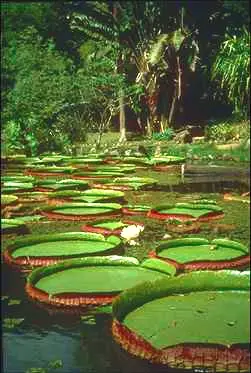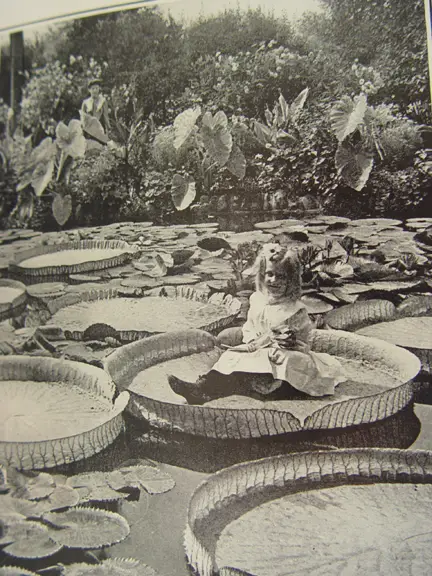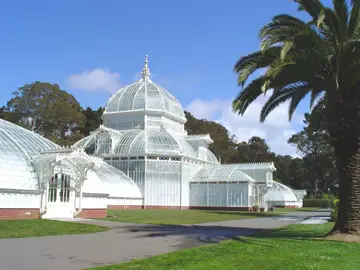The greatest of all water lilies, a plant named for Queen Victoria was the driving force behind the construction America’s most famous public glass house conservatories. In New York Botanical Garden rose the Crystal Palace and in San Francisco the Conservatory of Flowers. For in the 19th century it was all the rage to provide such an environment for the greatest water lily on earth. These and so many others are the perfect haunts of plant lovers on cold winter days.

Discovered in 1820, but well known to the native peoples of the Amazon basin for eons, its great pads will spread to many feet across, capable of bearing the weight of a human being. The locals called the Lily maiz de l’agua or corn of the water because its pods bear seeds rich in a starch so pure it was coveted for special pastries.

In Victorian England, the arrival of the first of these great lilies was to Joseph Paxton’s estate, Chatsworth where it was planted in the hot house. Leaves grew there to five feet in diameter and Paxton named it for his beloved Queen and presented it to her personally. This of course set off a fad of epic proportions driving all who owned hot houses and conservatories to seek out a seed or cutting of the famous lily. Those who did not have a conservatory built one. Every city’s civic minded gardening elite drove the government to build a conservatory so that they may too claim a Victoria Reggia in their midst as well. Crowds came to witness this marvel of nature.

Today the plant has been renamed Victoria amazonica with its very own genus. It has become widely available to water gardeners with much information on growing at this web site: http://www.users.uswest.net/~jhoneycutt/vic.htm
To read the original botanical work on the story of this amazing flower that inhabits a conservatory near you, check out Victoria Regia online, a paper written by John Fiske Allen in 1854 to document this most amazing aquatic species:
